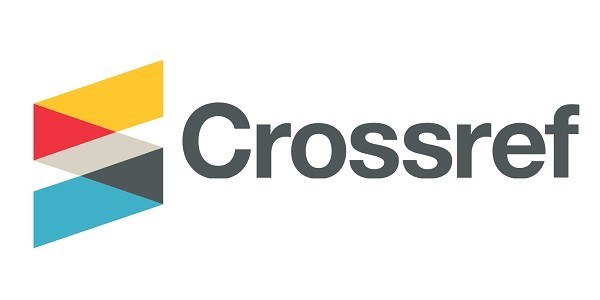Behaviouristic Model of the Main Character Speech Behaviour in Split Movie Script
DOI:
https://doi.org/10.56326/jlle.v2i2.2727Keywords:
Behavior, Personality, Language, Movie ScriptAbstract
The research aims to analyze the speech behavior of the main character, Kevin, who has a psychological issue, namely Dissociative Identity Disorder (DID) in Split movie script, which causes Kevin to have several different characters in one body. The data analyze the process of forming and trigger factors in speech behaviour in the Split movie script using qualitative descriptive method with B.F Skinner’s theory. The result shows there are two process of forming behavior namely classical conditioning, each of them has its own purpose in taking the main personality based on their will and operant conditioning process of each character that appears to takes control of the main personality because of the response from someone who makes them have to take control that emerges through this process is due to response given by others. The trigger factor in speech behaviour based on three process namely natural selection, each character taking control of the main personality due to their own desires, cultural control triggered each one of them to takes control through the main personality that control from people around and internal condition takes control due to encouragement by someone who makes them feel fear, anger and anxiety.
References
Abrahams, R. D., & Bauman, R. (1971). Speech Behavior and Decorum In A Caribbean Community 1. American Anthropologist, 73(3), 762-772. DOI: https://doi.org/10.1525/aa.1971.73.3.02a00160
Asfar, A. M. I. T., Asfar, A. M. I. A., & Halamury, M. F. (2019). Teori Behaviorisme. Makasar: Program Doktoral Ilmu Pendidikan. Universitas Negeri Makassar.
Bin Tahir, S. Z. (2015). Multilingual Behavior of Pesantren IMMIM Students in Makassar. Asian EFL Journal, 86, 45-64.
Bock, K., Levelt, W., & Gernsbacher, M. A. (2002). Language Production: Grammatical Encoding. Psycholinguistics: Critical Concepts in Psychology, 5, 405-452.
Buss, A. H. (2014). Social Behavior and Personality (Psychology Revivals). Routledge. DOI: https://doi.org/10.4324/9781315738567
Chaer, Abdul. (1994). Pengantar Semantic Bahasa Indonesia. Jakarta. Rineka Cipta.
Edition, F., & Carrol, D. W. (2008). Psychology of Language. New York.
Effendy, O. U. (1986). Dinamika Komunikasi. Yogyakarta: Remadja Karya.
Gunawan, I. (2013). Metode Penelitian Kualitatif. Jakarta: Bumi Aksara.
Helgadottir, F. D., Menzies, R. G., Onslow, M., Packman, A., & O'Brian, S. 2(014). Safety Behaviors and Speech Treatment for Adults Who Stutter. Journal of Speech, Language, and Hearing Research, 57(4), 1308-1313. DOI: https://doi.org/10.1044/2014_JSLHR-S-13-0041
Ji, Y., Wei, J., Zhang, J., Fang, Q., Lu, W., Honda, K., & Lu, X. (2017). Speech Behavior Analysis by Articulatory Observations. Procedia computer science, 111, 463-470. DOI: https://doi.org/10.1016/j.procs.2017.06.048 .
Maydiantoro, A. (2022). Teori Belajar Behavioristik. FKIP Universitas Lampung: Bandar Lampung.
McGuigan, F. J., & Dollins, A. B. (1989). Patterns of Covert Speech Behavior and Phonetic Coding. The Pavlovian Journal of Biological Science, 24(1), 19-26. DOI: https://doi.org/10.1007/BF02964527
Meyer, C. F. (2010). Introducing English Linguistics International Student Edition. England: Cambridge University Press.
Mohammadzaheri, F., Koegel, L. K., Rezaee, M., & Rafiee, S. M. (2014). A Randomized Clinical Trial Comparison Between Pivotal Response Treatment (PRT) and Structured Applied Behavior Analysis (ABA) Intervention For Children With Autism. Journal of Autism and Developmental Disorders,44(11), 2769-2777. DOI: https://doi.org/10.1007/s10803-014-2137-3
Morris, E. K. (2007). Skinner, BF (Burrhus Frederic). The Blackwell Encyclopedia of Sociology. DOI: https://doi.org/10.1002/9781405165518.wbeoss335
Nahar, N. I. (2016). Penerapan Teori Belajar Behavioristik Dalam Proses Pembelajaran. NUSANTARA: Jurnal Ilmu Pengetahuan Sosial, 1(1).
Pronovost, W., Wakstein, M. P., & Wakstein, D. J. (1966). A Longitudinal Study of The Speech Behavior And Language Comprehension. Exceptional Children. 33(1), 19-26. DOI: https://doi.org/10.1177%2F001440296603300104
Roane, H. S., Fisher, W. W., & Carr, J. E. (2016). Applied Behavior Analysis As Treatment for Autism Spectrum Disorder. The Journal of Pediatrics, 175, 27-32. DOI: https://doi.org/10.1016/j.jpeds.2016.04.023
Robinson, P., & Ellis, N. C. (Eds.). (2008). Handbook of Cognitive Linguistics and Second Language Acquisition (270). New York: Routledge.
Wiratno, T., & Santosa, R. (2014). Bahasa, Fungsi Bahasa, dan Konteks Sosial. Modul Pengantar Linguistik Umum, 1-19. Yogyakarta: Pustaka Pelajar.
Wolters, N., Knoors, H., Cillessen, A. H., & Verhoeven, L. (2014). Behavioral, Personality, and Communicative Predictors of Acceptance and Popularity in Early Adolescence. The Journal of Early Adolescence, 34(5), 585-605. DOI: https://doi.org/10.1177/0272431613510403
Downloads
Published
How to Cite
Issue
Section
License
Copyright (c) 2022 Vindy Yulandari Mustapa, Dahlia D. Moelier, Andi Tenri Abeng

This work is licensed under a Creative Commons Attribution 4.0 International License.










